I have a status box which is it’s own component. On my app there are multiple instances of this status box component as you can see from the image below:
The details of each status box are stored in the browsers local storage and are created when a form is submitted with the passed in form values being saved to the browsers local storage and displayed on the status box component.
The details of each separate status box component instance are treated as a map data structure. When the app.component first initialises, a map is created for each of the details stored in the browsers local storage and they are pushed onto an array called myConfigs:
export class AppComponent implements OnInit, OnDestroy
{
myConfigs: any[] = [];
localStorageKeys: string[] = ['Test']
constructor() {}
ngOnInit(): void
{
for (var key of this.localStorageKeys)
for(let i = 1; i < 5; i++)
if (localStorage.getItem(key+i) != null)
this.myConfigs.push(new Map(JSON.parse(localStorage.getItem(key+i)!)))
else
console.log(key+i + ' currently not available');
}
}
Then in the app.component template we loop through each map item in the myConfigs array as a single config, then pass that to a directive (appDynamicStatusBox).
<app-header></app-header>
<div class='status-box-container'>
<ng-container *ngFor="let config of myConfigs; let i=index" appDynamicStatusBox [config]="config"></ng-container>
</div>
In the directive we create an instance of each status box component. The config item from the myConfigs is an @Input in this directive, and from there we can create each status box component via a resolveComponentFactory then set each value in that component instance with the passed in config variable:
@Directive({selector: '[appDynamicStatusBox]'})
export class DynamicStatusBoxDirective implements OnInit
{
@Input() config: any;
componentRef!: ComponentRef<StatusBoxComponent>;
constructor(private resolver: ComponentFactoryResolver, public viewContainerRef: ViewContainerRef) {}
ngOnInit(): void
{
const factory = this.resolver.resolveComponentFactory(StatusBoxComponent); // Retrieves the factory object that creates a component of the given type
this.viewContainerRef.clear(); // clears the previous view
this.componentRef = this.viewContainerRef.createComponent(factory); // Instantiates a single component of type StatusBoxComponent and inserts its host view into this container
this.componentRef.instance.name = this.config.get('name')
this.componentRef.instance.deviceId = this.config.get('device')
this.componentRef.instance.cpuTemp = this.config.get('cpuTemp')
this.componentRef.instance.diskUsage = this.config.get('diskSpace')
this.componentRef.instance.systemUptime = this.config.get('uptime')
this.componentRef.instance.systemTime = this.config.get('time')
this.componentRef.instance.number = this.config.get('num')
this.componentRef.instance.device = this.config.get('device')
this.componentRef.instance.value = this.config.get('value')
}
}
What I would like to do is to be able to retrieve the this.componentRef.instance.deviceId which is the key stored in the local storage that holds the data for a particular status box component and be able to press the delete button to delete the local storage and thus delete the component instance.
But I’m not sure how I could get the this.componentRef.instance.deviceId value by clicking / selecting the red delete button of the particular status box component.
If anyone could help, it would be appreciated.
